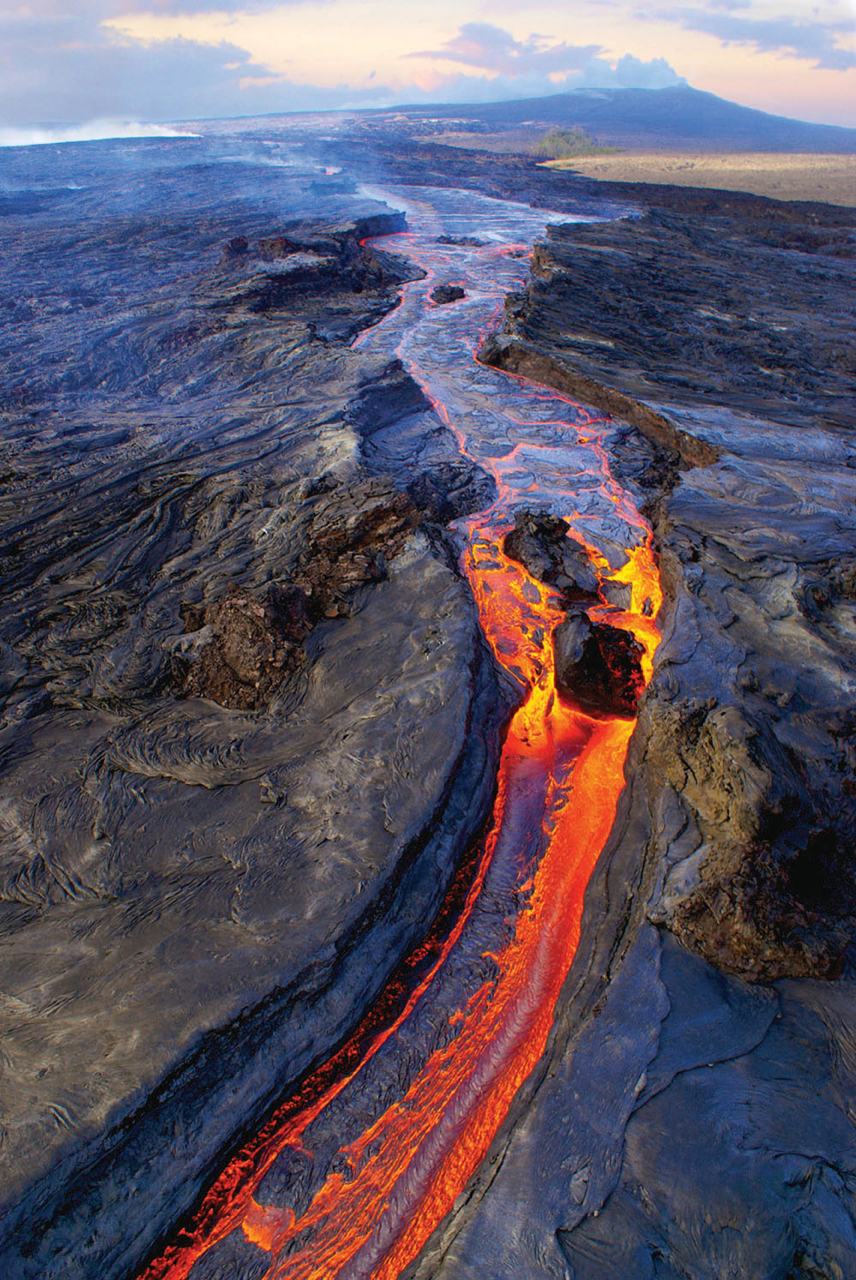GEOGRAPHY
Mauna Loa is the largest volcano on our planet. Its long submarine flanks descend to the sea floor an additional 3 miles, and the sea floor in turn is depressed an additional 5 miles due to Mauna Loa’s great mass. This makes the volcano’s summit about “56,000 feet” above its base! The enormous volcano covers half of the Island of Hawai`i and by itself amounts to about 85 percent of all the other Hawaiian Islands combined. Mauna Loa’s crater is commonly known as Moku’aweoweo “Land of the Burning.”

MYTHOLOGY & PELE
Pele-honua-mea, “She Who Shapes the Sacred Land,” is the Triple Goddess – Mother, Youth and Crone, constantly building, destroying and recreating new life.
 It is said that Pele presently lives in the Crater of Halema’uma’u, but as I discovered, she too lives in Mauna Loa Crater-the Mother of All the Volcanoes.
It is said that Pele presently lives in the Crater of Halema’uma’u, but as I discovered, she too lives in Mauna Loa Crater-the Mother of All the Volcanoes.
In 2010, while studying Mauna Loa from a viewpoint of 10 miles above the earth, I noticed a familiar shape in the crater itself.
For a better view I moved to 7 miles above the crater, and I clearly saw the dark outline of what appeared to be a pregnant woman.
At 5 miles above the crater, and by lightening the dark image, vivid details came into view. This Mother of Hawai’i is pregnant, fertile with life, greatly endowed, with humbly bowed head, and braided hair. She has no feet, believed to be a sign of her spiritual nature. And interestingly, like the Beloved Queen Liliuokalani, the face of Pele-honua-mea also bears a single tear in her right eye.
Similarly, the oldest prehistoric stone carvings throughout Eastern Europe depict the First Mother, (28,000 BC) named, Venus of Willendorf. Her resemblance to the Goddess Pele within Mauna Loa is striking! For she too represents the mother of the land: pregnant, fertile with life, greatly endowed, with humbly bowed head, braided hair and has no feet, a sign of her spiritual nature.
Craters
The lip of Moku’aweoweo Crater sits upon the head of a smaller crater appearing like the head of a priest or kahuna. His face is peaceful and his eyes are closed. Where the two craters join at the top of the priests’ head you will see a figure eight, a Mobius circle, symbolic of eternal union and infinity. He is also holding a staff, symbolic of sovereignty. The top of the staff is carved with multiple chevrons pointing upward. The kahuna priests often carried ornately carved staffs said to represent the 10 states of consciousness from the slave mind to the god mind.
The priests’ hand, holding a smoke, covers his mouth. Many of the earliest cultures of our world used smoking as a conduit for prayer. Below his hand are two more descending craters and from them, rivers of molten lava run down his body to the sea.
HOW TO LOCATE THE LANDSCAPE
Finding landscapes is a matter of patiently searching small areas of your map at varyingly levels of altitude. Some landscapes are only 500 feet in length while others are a phenomenal 2,000 miles in length. The larger the landscape the farther away you have to be to see it. Check places that you have always liked to go, as familiarity can help. Bear in mind that not all landscapes are found right side up!







